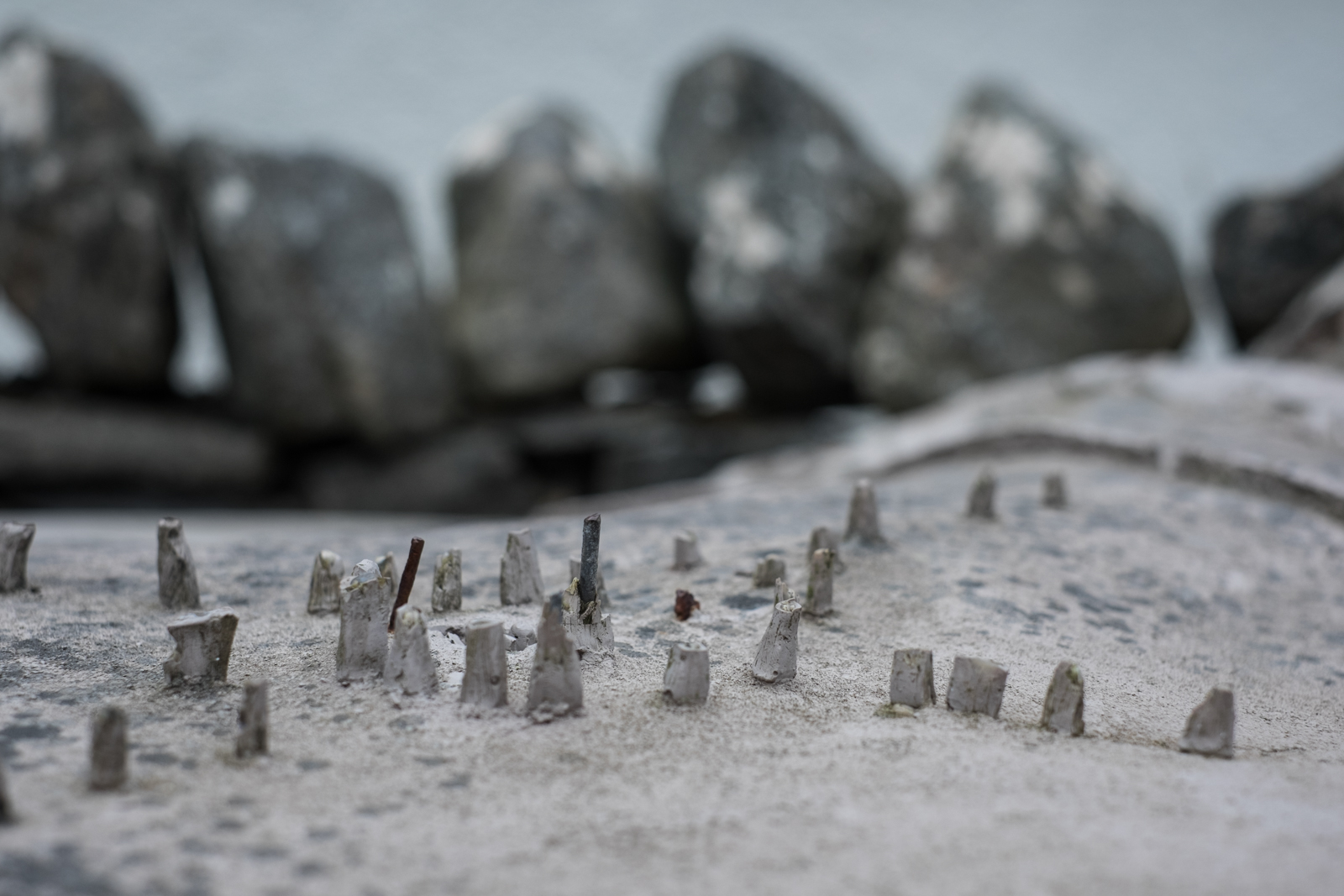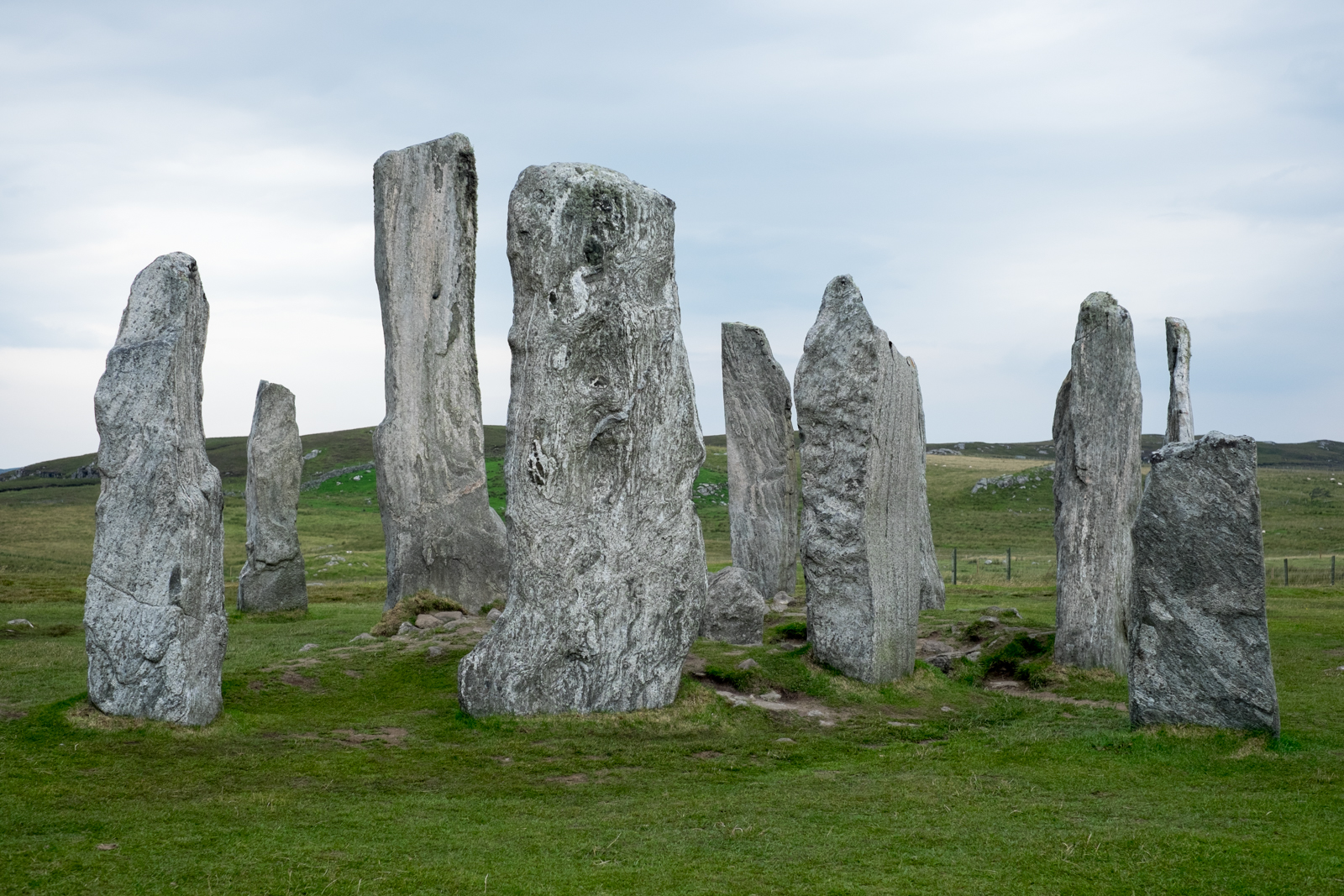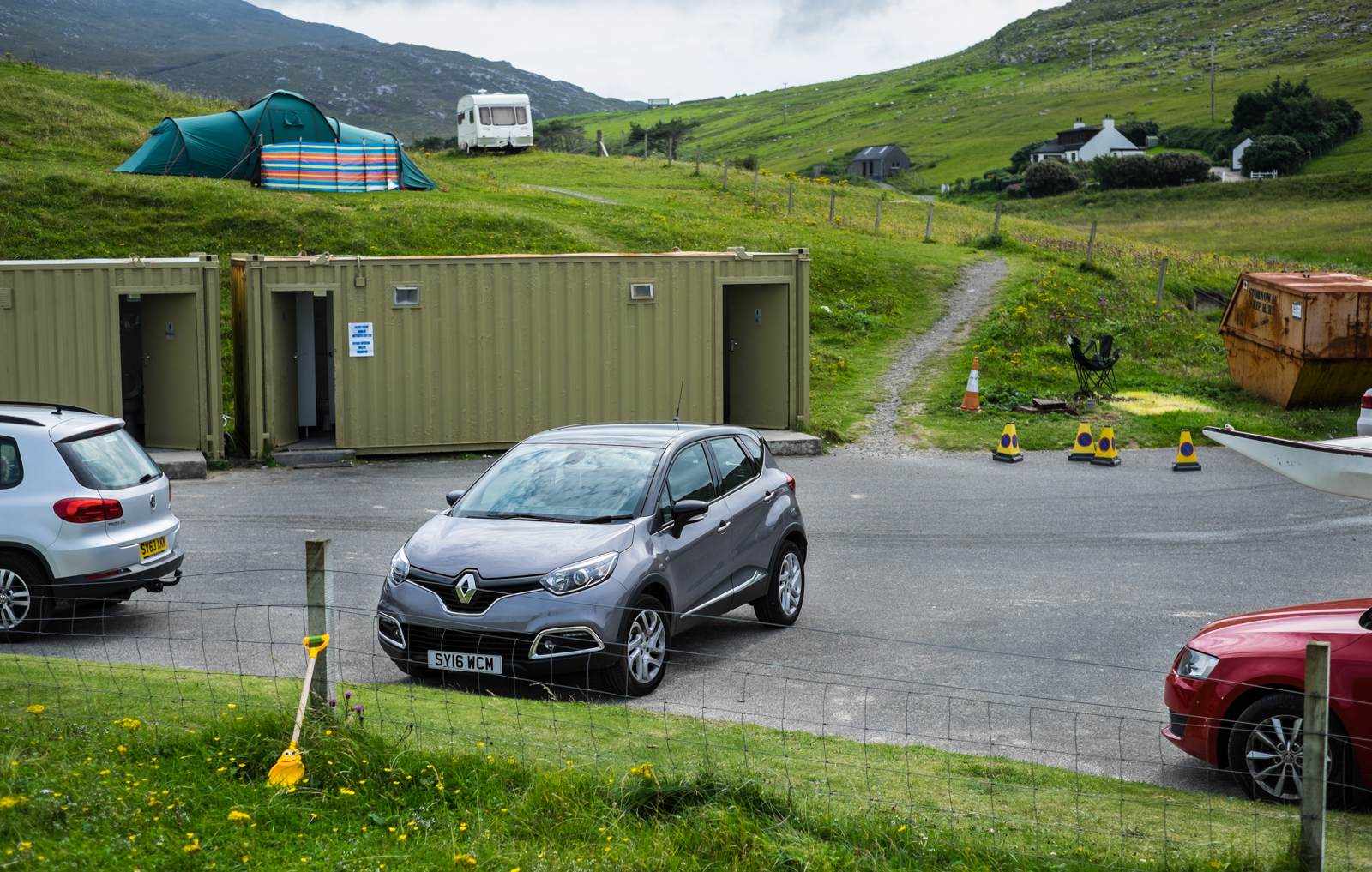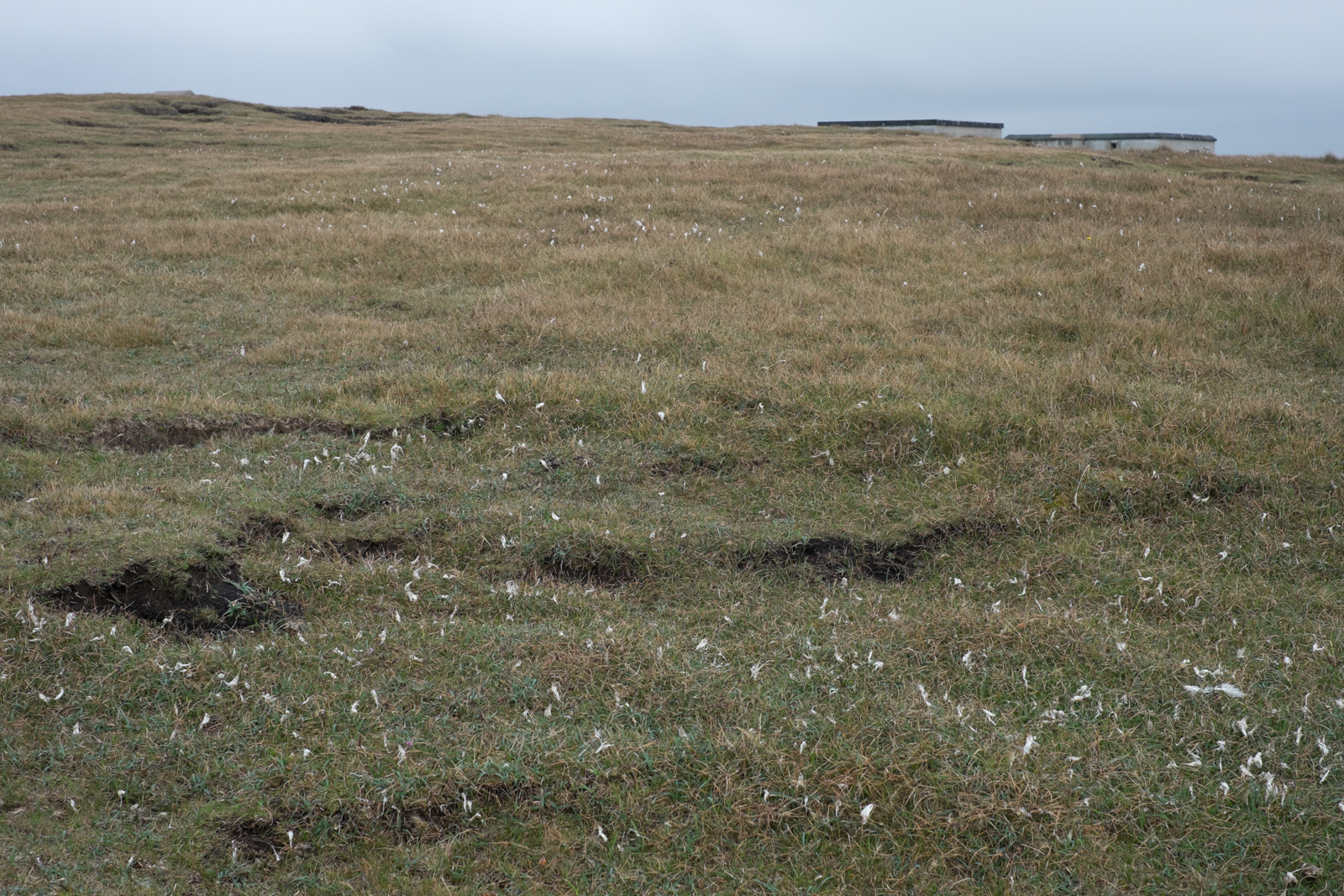The Outer Hebrides
The Outer Hebrides, also known as the Western Isles, are a group of islands off the mainland of Scotland facing the Atlantic Ocean. They possess a wealth of archaeological treasures and natural beauty: the standing stones at Callanish are dated to 2900 BCE and the remains of habitations dot the countryside. Today the Outer Hebrides are connected to the rest of the world through tourism, fishing, oil, and renewable energy. The land, towns, and crofts have been shaped, built, and bridged by residents and visitors, by a military base, by crofters and missile tests, by memory and the physical evidence of otherwise unrecorded habitation.
Both the Blackface Sheep and the decommissioned Ministry of Defense surveillance station RAF Aird Uig whose remains stand at Gallan Head are part of the history of the Outer Hebrides. Gallan Head, the farthest northwest point of the United Kingdom, overlooks waters where Vikings and Norwegian conquerors sailed; where ships taking migrants to Canada – many against their will – passed, their crofts deemed unprofitable for landowners and repurposed as grazing land for the Blackfaces; where shipping convoys between North America and besieged Europe flowed during the Second World War, under cover of dazzle camouflage, for fear of German U-boats. After the Second World War, the Ministry of Defense set up a listening station to monitor radio, submarines, and low-flying aircraft. No longer operational, the site has been acquired by the Gallan Head Community Trust, which intends to transform it into a dark skies observatory and whale listening post.
Our experience of place is necessarily uneven, and this unevenness is a function both or our personal histories and that of the place. Our modern idea of space, which measures space and understands it as a calculable whole, does not account for the ways in which we as individuals move through the world on the backs of our own experiences. And the contours that we navigate are also the product of time and circumstance; landscapes are not as permanent as they sometimes feel, they are in fact continuously changing. The story of a place – the stories that we tell about places – are based on the stories that we want to know, need to know, or are made to know.
I have been exploring these ideas in my Garrison Creek project in Toronto, where walking the same streets each day affords a familiarity with detail. But on a recent visit to the Outer Hebrides, I found myself in a place that is both open in space - spare, not dense- and rich in connections to the past and to the human actions that have been required to live on a place like this, challenged by both nature and politics. These photographs made in the Outer Hebrides seek to recognize history and human traces, from the distant past or a recent day, in order to create a system of connections: the land and the sea, the decommissioned military base and its future, the sheep, me, you.
2016
all images © Leo Hsu


















